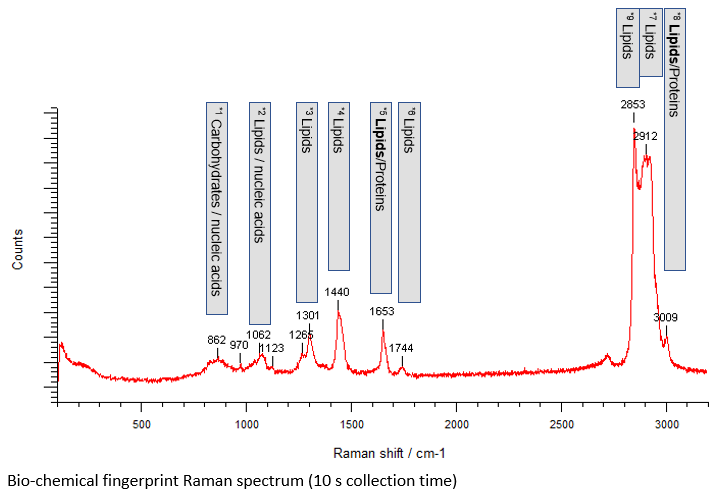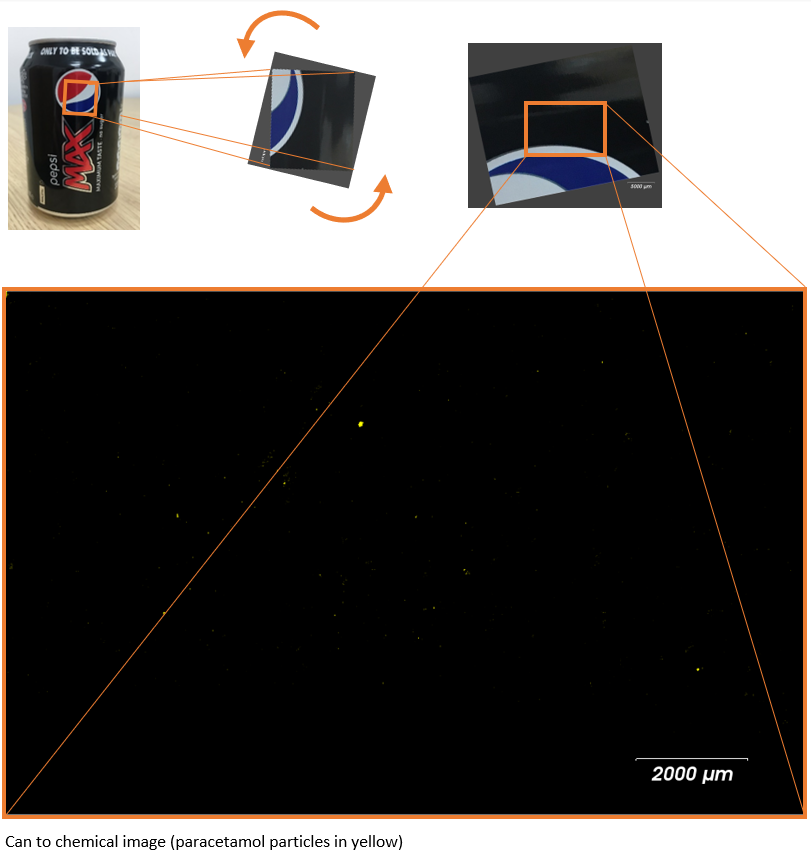The last few years have made many of us consider what we are touching on a daily basis. This is something that we routinely perform – at times subconsciously - which can have a profound impact. This means that the ability to analyze object surfaces for trace materials is particularly relevant to many of us.
Trace materials within a fingerprint are an example of this. This perfectly demonstrates the power and impact that can be had by modern chemical analysis. Though detailed bio-chemical information is provided by the fingerprint itself - collected in mere seconds using the inVia™ confocal Raman microscope – something of greater interest, particularly within the forensic communities, is the presence of chemicals that may be hidden in the print.

Image Credit: Renishaw plc – Spectroscopy
High-resolution images of chemical components are created by modern advanced chemical imaging systems. Chemical imaging needs to be versatile over a range of object surfaces in order to be truly useful in a highly practical and physical environment. It seemed perfectly sensible then, to take an everyday object, one used globally, to show what the inVia confocal Raman microscope can really do.
A drinks can was used, complex in shape and color, to discover what was in ‘the touch'.
Equipped with a significant range of technologies and options, the inVia Raman microscope is the ideal system to look at complex objects, like a drinks can. Foreign materials within the fingerprint can be viewed with polarized or darkfield methods which facilitates highly targeted analysis. However, there is more to this print than meets the naked eye. The print needs to be scanned with high sensitivity and specificity for those chemical components.

Image Credit: Renishaw plc – Spectroscopy
Fast StreamLine™ chemical imaging was used, and the complex surface shape tracked using LiveTrack™ focus-tracking technology. The material is then chemically identified, with the use of an image showing where it is located in the print and on the can. Unique to Renishaw Raman systems, LiveTrack is truly indispensable when analyzing a range of materials – particularly samples which are rough, curved, or have uneven surfaces.
It was revealed by this analysis that a finger had been in contact with a paracetamol (acetaminophen) tablet before handling the can. This was corroborated by the user’s experience: the individual had taken a headache pill and washed it down with soda. The particles identified in this case were around 15 µm in size, and this identification required no knowledge of what might be present.

Image Credit: Renishaw plc – Spectroscopy
In order to find out more about inVia’s chemical imaging and how it can be applied to your materials, feel free to contact the team to discuss your needs.
Acknowledgments
Produced from materials originally authored by Tim Smith, Applications Manager from Renishaw.

This information has been sourced, reviewed and adapted from materials provided by Renishaw plc - Spectroscopy.
For more information on this source, please visit Renishaw plc - Spectroscopy.